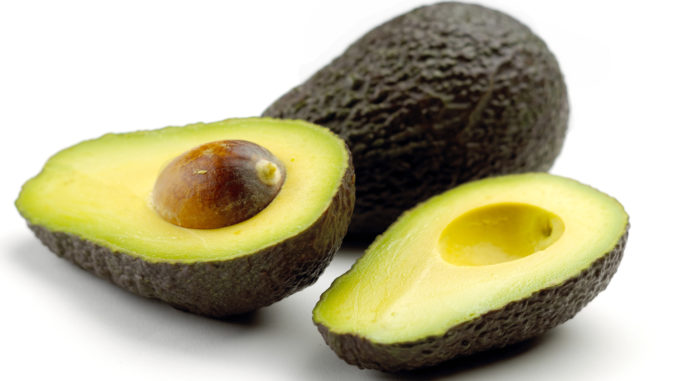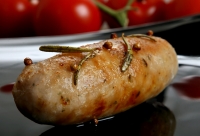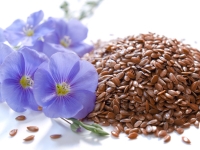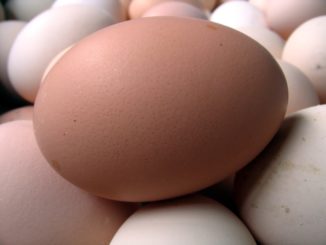
If you’re on a mission to see weight loss as quickly as possible, you may be questioning whether or not you should be adding healthy fats into your diet plan.
While you do realize that these are part of a well-balanced diet, since you’re trying to maximize the amount of fat burning taking place in your body, will they really fit in with your plan?
Or is it best that you keep them lower for the time being until you’ve reached your goal weight?
In order to better understand what healthy fats are all about, you need to come to a firm understand with regards to dietary fat in general. Then you can piece together the puzzle of good weight loss nutrition and build a diet that works for you.
Let’s have a look at what you should know about healthy fats.
Understanding Good and Bad Fats
First things first we need to go over what good and bad fats are. Good fats are those that don’t contain full saturation of hydrogen bonds in their molecular structure. If you’ve ever heard of the term ‘saturated’ fat or ‘unsaturated’ fat, this is precisely what this is describing.
Saturated fats have a full supply of hydrogen molecules while unsaturated fats don’t have the double bonds present. This makes them much healthier for the body and less likely to put you at an increased risk of disease.
While bad fats will increase your bad cholesterol levels in the body, healthy fats can help bring it down, so they’ll actually improve your overall heart health.
How To Avoid Bad Fats

So what are the bad fats that you need be on the lookout for?
When trying to avoid bad fats in your diet, you want to think high fat animal products. These are the ones that most often contain the most saturated fat total and the ones that will produce the most damaging effects on the body.
Examples of Bad Fats:
- High fat beef
- Sausage
- Bacon
- Skin found on poultry (which is also very high in saturated fat)
- Also all the high fat dairy products that can be consumed such as high fat cheeses, cream, homo milk, and so on
You should be avoiding butter, lard, and shortening as well as these contain a high amount of unhealthy fats also. Not only are these bad fats going to be high in saturated fat, but they’ll also be very high in calories as well.
Another form of bad fats that you really must avoid at all costs are trans fats. Trans fats, which are recognizable by the term ‘partially hydrogenated vegetable oil’ have been through a certain form of processing that makes them especially dangerous to the human body.
While you do require small amounts of saturated fat each day for hormonal reasons, trans fats should be absolutely avoided. The body has zero use for this form of fat and even small intakes can cause great harm.
Trans fats are most often found in baked or fried foods along with many convenience snacks, bars, and other forms of foods. Make sure that you always read the label on any food you’re about to consume and if you see trans fat listed, avoid that food at all costs.
Let’s Look At Good Fats

Moving on, now it’s time to look at the healthy fats that you should be taking in. For best results with your diet plan, you want to focus on healthy fats that come from the ground and are created naturally in nature.
Examples of Fats That Can Help Burn Fat:
- Avocadoes
- Nuts and Natural Nut Butter
- Olive, Sunflower, and Safflower oil
- Seeds
These are all unsaturated and monounsaturated varieties of healthy fats that will do your body good.
In addition to that, you’ll also want to make sure that you’re consuming enough omega fats in the diet, which is a special kind of essential fatty acids (including omega 3 and omega 6 fats) that are extremely beneficial to your overall health. If there’s one healthy fat to consume, this would be it.
Omega Fats Are Found In Foods Such As:
- Walnuts
- Flaxseeds
- Fatty sources of fish such as salmon and mackerel.
If you aren’t eating these regularly in your diet, then you should be using a supplement instead to make sure you’re not falling short.
How Healthly Fats Can Help With Weight Loss
So now that you know the difference between bad and healthy fats, how can eating healthy fats help out with the process of weight loss?
First, healthy fats will help to reduce your appetite level. This nutrient takes a very long time to break down in the body and as such, will help to keep hunger levels down lower for hours after you’ve consumed it.
Healthy fats will also help to stabilize your blood glucose levels because of the lengthy digestion process and those who have more stable blood sugar are better able to control the amount of food they’re eating during the day.
If you experience a sudden blood glucose drop, this is very likely to bring about strong food cravings, especially for foods that are higher carb in nature, which could potentially throw you off your plan entirely.
For maximum calorie control, a moderate intake of healthy fats can help
Finally, the last reason that healthy fats are great to consume for weight loss purposes is because they will enhance insulin sensitivity, which means that when you do consume carbohydrate rich foods, your body will be better equipped to handle them.
This then means that there is a higher chance the carbs you eat will be burned up for energy or sent to the muscle stores, rather than getting converted to body fat stores.
So there you have everything that you need to know about healthy fats as they relate to weight loss. Do keep in mind that since they contain more calories than proteins and carbs you do need to watch your serving sizes, but as long as you do, they can definitely be added to a sound fat loss diet plan.




Eating a low fat diet is important; but even more important is eating a proper fat diet. As the article says, we need fat. However, we don’t need trans fat, and we need saturated fat. A person can do a great deal of good toward their health goals by changing the types of fat they eat.
For example, let’s say you don’t need to lose much weight, but your cholesterol is high. Changing the type of fat in your diet, then, is just as important as reducing your fat. Olive oil, nuts and avocadoes are all great sources of good fat that you needn’t feel guilty of. Remember, if it doesn’t come from an animal, it can’t have cholesterol, even though it may have fat.
The article also makes a great point about carbohydrates. You’re not going to see a weight loss no matter how much you reduce your fat if you make up those calories by eating products made from white flour and those with sugar.
If you’ll notice, most everything on the “bad” foods list is processed. If you love these foods, modify them by making them at home. A hamburger, for example, needn’t be bad for you. Certainly, it is not something you would eat every day.
But, if you buy good ground beef (90/10) for enough juiciness without being greasy, and you season it yourself, using Worcestershire sauce, some mustard and a little onion powder, you can make a great tasting hamburger that is perfectly fine. Same goes for pot pie – use grilled or poached chicken, make a white sauce, add veggies and a thin crust on top – it’s nutritious and comforting – and not bad in moderation.
The key is to buy fresh foods and prepare them yourself at home to avoid the added fat, sodium and preservatives. Any time food is processed to have a long shelf life and taste good with inferior ingredients; it’s going to be bad for you.